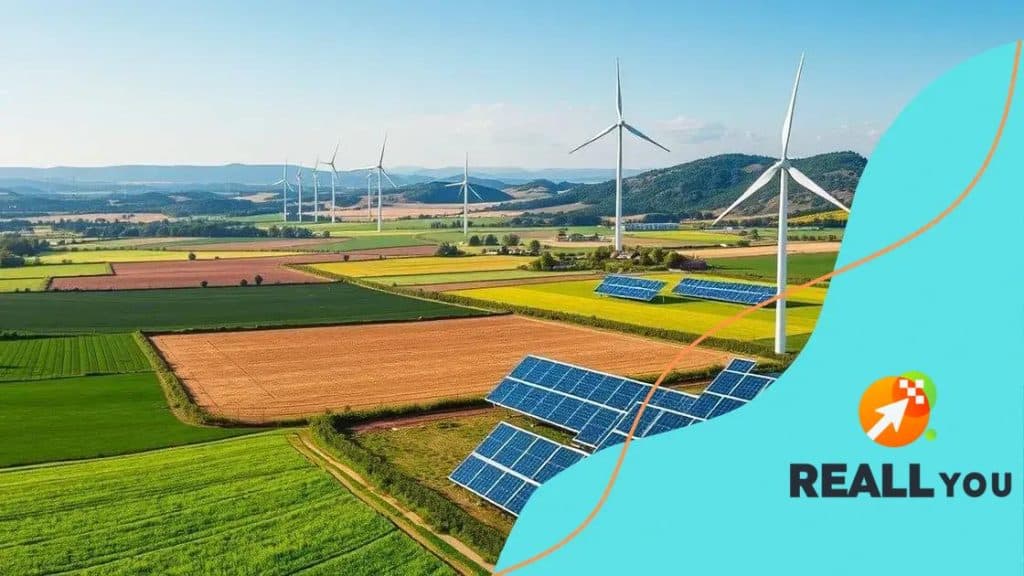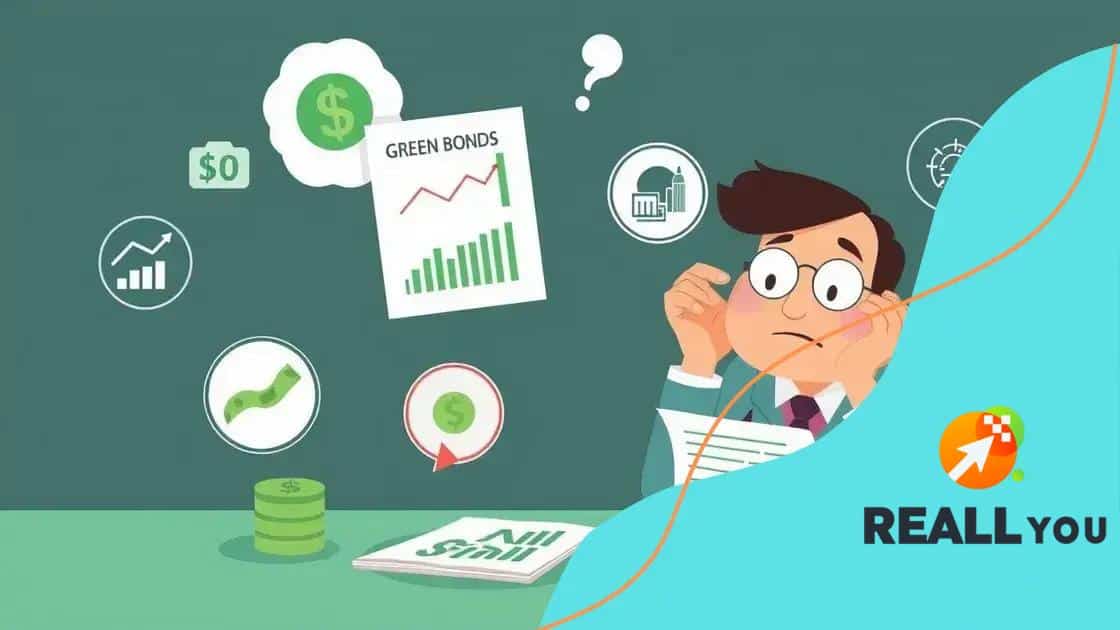How to invest in green bonds in 2025: Your guide

Anúncios
Investing in green bonds in 2025 offers an opportunity to support sustainable projects while potentially earning competitive returns, backed by increasing government support and a growing focus on ecological responsibility.
How to invest in green bonds in 2025 is a question on many investors’ minds lately. As sustainability becomes a growing priority, these bonds offer a unique way to contribute to environmental initiatives while seeking return on investment. Ready to explore how you can take part in this green revolution?
Anúncios
Understanding green bonds and their significance
Green bonds have emerged as a crucial financial instrument in the quest for sustainability. They support projects aimed at combating climate change and fostering environmental initiatives. This growing market not only provides investors with the opportunity to earn returns but also to make a positive impact on the world.
Anúncios
What Are Green Bonds?
Green bonds are fixed-income securities specifically designated to raise funds for projects that benefit the environment. They can finance a variety of endeavors, including renewable energy, energy efficiency, and sustainable agriculture. Investors are motivated to purchase these bonds as a way to align their portfolios with their values.
Significance of Green Bonds
The significance of green bonds extends beyond mere financial returns. By investing in these bonds, individuals and institutions contribute to the global transition towards a low-carbon economy. This helps promote sustainable practices and encourages innovation in green technologies.
- Provides funding for environmental projects.
- Helps companies meet sustainability goals.
- Encourages investment in renewable energy.
Moreover, green bonds often come with certain tax incentives, making them an attractive option for many investors. They also enhance an investor’s reputation by demonstrating a commitment to environmental responsibility.
As the demand for sustainable investment options grows, understanding green bonds becomes essential for investors interested in aligning their portfolios with eco-friendly values. By investing in this market, they can play a vital role in financing solutions to pressing environmental issues.
Key benefits of investing in green bonds

Investing in green bonds offers numerous benefits for both investors and the environment. These financial instruments are specifically designed to fund projects that promote sustainability and combat climate change. Not only do they contribute to a greener planet, but they also provide opportunities for financial growth.
Financial Returns
One of the most appealing aspects of green bonds is the potential for solid financial returns. Investors can earn interest while supporting eco-friendly initiatives. As the market for sustainable investments continues to grow, the value of green bonds is likely to increase as well.
Support for Sustainability
By investing in green bonds, individuals contribute to projects that directly benefit the environment. This includes renewable energy installations, energy-efficient buildings, and conservation efforts. Each investment helps finance sustainable practices that reduce carbon footprints.
- Contributes to global sustainability goals.
- Drives innovation in green technology.
- Promotes cleaner air and water.
Green bonds also connect investors with projects that align with their personal values. Many people today want their investments to support causes they care about, such as fighting global warming or protecting natural resources. This alignment creates a sense of purpose in investing.
Lower Risk with Increasing Demand
As environmental awareness increases, the demand for green bonds is rising. This growing interest can lower risks associated with investing. Investors are more likely to see stability in green bonds as governments and corporations shift towards more sustainable practices.
The regulatory environment is also becoming more favorable. Many nations support the issuance of green bonds through incentives and policies that encourage sustainable investing. This means that investors can feel confident about their choices.
How to choose the right green bonds
Choosing the right green bonds can be a rewarding but challenging task. It’s important to consider several factors to ensure that your investment aligns with your financial goals and values. Understanding what to look for can help you make informed decisions.
Evaluate the Project’s Impact
Before investing, it’s essential to evaluate the environmental impact of the project being funded by the green bond. Check if the bond finances renewable energy, energy efficiency, or sustainable infrastructure. Bonds targeting significant environmental improvements are often more reliable and impactful.
Consider the Issuer’s Reputation
The issuer’s reputation matters, too. Research the organization behind the bond. Look for established companies or municipalities with a strong commitment to sustainability. Reliable issuers usually provide transparency in their projects and investments.
- Check for third-party certifications.
- Review past performance and project outcomes.
- Investigate any controversies related to the issuer.
Understanding the bond’s terms is just as crucial. Review the maturity date, interest rates, and any associated fees. Bonds with longer maturities may offer higher returns but come with more risks. Knowing the bond’s structure can help align it with your investment strategy.
Assess Risk Levels
Every investor should assess the risk level associated with each bond. For green bonds, this includes evaluating the financial health of the issuer and the stability of the project funded. Researching market trends and seeking expert advice can help you navigate potential risks. It’s wise to diversify your investments to minimize risk while still benefiting from green initiatives.
Lastly, consider how the bond fits into your overall investment portfolio. Does it complement your other investments and contribute to a balanced approach? A well-rounded portfolio can enhance stability and offer better returns over time.
Risks associated with green bond investments

Investing in green bonds offers numerous benefits, but it also comes with certain risks that investors should understand. A thorough evaluation of these risks is essential for informed decision-making.
Market Risk
Market risk is one of the key concerns. Like any investment, the value of green bonds can fluctuate based on market conditions. Economic downturns can lead to decreased demand, impacting the bond’s price. Investors should remain vigilant and monitor market trends.
Credit Risk
Credit risk relates to the issuer’s ability to fulfill its financial obligations. If the organization behind the green bond faces financial difficulties, it may default on payments. Researching the issuer’s financial health and history is crucial in mitigating this risk.
- Evaluate the credit rating of the issuer.
- Check for past defaults or negative ratings.
- Consider the project’s viability beyond just the bond.
Additionally, regulatory risks can affect green bonds. Changes in government policies or regulations impacting green initiatives can alter the market significantly. Staying informed about governmental policies related to sustainability is important for investors.
Liquidity Risk
Liquidity risk is another factor. Some green bonds may be less liquid compared to traditional bonds. If you need to sell a green bond before its maturity, it might be challenging to find a buyer, which can lead to losses.
Understanding these risks allows investors to make more strategic decisions in their quest for sustainable investing. It’s essential to weigh the potential rewards against these risks to create a balanced investment strategy.
Future trends for green bonds in 2025
The future of green bonds appears promising as we look toward 2025. With increasing awareness of climate change and sustainability, the demand for green investments is expected to rise significantly. This growth is driven by both consumers’ desires to invest responsibly and by governmental policies that enhance support for sustainable projects.
Increased Government Support
Governments around the world are beginning to recognize the importance of funding for sustainable initiatives. In 2025, we may see stronger regulations and incentives that facilitate the issuance of green bonds. This governmental backing can enhance credibility and trust in these financial instruments, attracting more investors.
Innovative Projects
As the market matures, we can anticipate a broader range of projects being financed by green bonds. Innovations in technology, such as advanced renewable energy solutions and eco-friendly transportation, will likely receive funding. Investors will find opportunities in exciting sectors that align with environmental goals.
- Expansion into emerging markets.
- Funding for urban sustainability projects.
- Development of green infrastructure.
Another trend to watch is the growth of green bond indices. These indices will help investors track performance and make comparisons easier. By 2025, we can expect more financial products designed to cater to the growing eco-conscious investor base.
Enhanced Transparency
Transparency and reporting standards will continue to evolve. Investors demand accountability regarding how their funds are used. Enhanced disclosure will assure investors that their money is going to genuinely sustainable projects. This shift will likely promote confidence and lead to higher investments in green bonds.
In summary, as we move towards 2025, the landscape for green bonds will become increasingly robust, offering exciting opportunities while tackling the urgent issues of climate change and sustainability.
FAQ – Frequently Asked Questions about Green Bonds
What are green bonds?
Green bonds are financial instruments specifically designed to fund projects that have positive environmental impacts, such as renewable energy or sustainable infrastructure.
Why should I invest in green bonds?
Investing in green bonds allows you to support sustainability efforts while potentially earning returns, making it a rewarding choice for eco-conscious investors.
What are the risks associated with investing in green bonds?
Risks include market risk, credit risk from the issuer’s financial health, and liquidity risk if you need to sell the bond quickly.
How will green bonds evolve by 2025?
By 2025, we can expect increased government support, innovative projects being funded, and improved transparency in how the funds are used.






